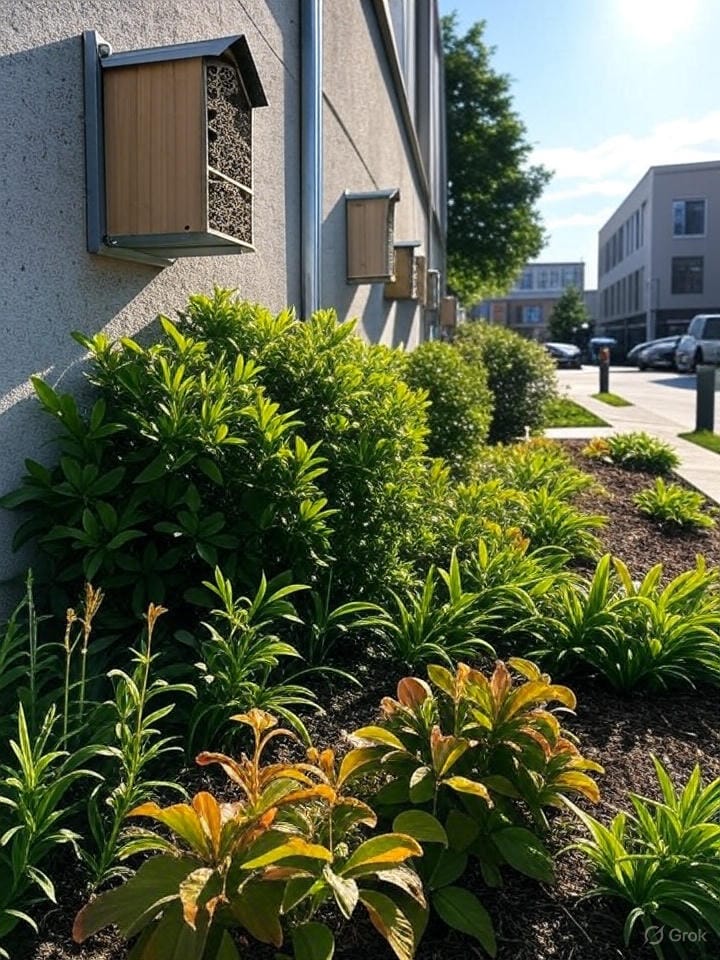
Table of Contents
ToggleUrban bee hotels in public spaces
In this rapid urbanization and technical Era we see that cities around the world are discovering innovative solutions, one of which is- urban bee hotels in public spaces. They are small but impactful structures that provide much-needed nesting sites for solitary bees which are critical pollinators but often overlooked in conservation efforts.
Traditional landscaping and urban planning rarely account for native pollinators, yet over 80% of flowering plants depend on them. Solitary bees are losing places to live and that’s where bee hotels come in. Now they will be on lamp posts, park benches transit stations and schoolyards. In this blog I will give you a complete guide on how to install bee hotels in public spaces.
Installing bee hotel in public area: benches, lamp posts and more
Cities around The World are finding creative ways to support native pollinators by embedding bee hotels into local public infrastructures. They are not just decorative boxes that are hung in quiet gardens. Now urban planners are placing bee hotels in spots where people walk, sit or gather so that pollinators would be visible. Click here to know the blue roof benefits
Park benches with Bee habitat compartments
In several forward-thinking cities park benches now come with built-in wooden slats or panels filled with bamboo tubes and drilled wood blocks that offer shelter to solitary bees. Bee hotels can be attached to the backside or side arms of wooden or metal park benches. Use anti-theft metal clamps or tamper-proof screws to fix them, especially in public parks where vandalism is possible. Keep the height around 3-4 feet above ground.
Lamp posts and street poles
Some urban areas have begun attaching hotel modules directly to lamp posts or utility poles. Most urban lamp posts have cylindrical poles so you have to use adjustable metal band clamps (like hose clamps) to secure the lightweight bee hotel. Place the hotel just below the lamp housing to avoid direct light glare. Always put nesting holes away from heavy street traffic, and place them on nearby trees or green medians. Don’t install 6 feet above.
Standalone Bee hotel installation in parks
Larger city parks often give a small patch of land for freestanding bee hotels that are made of timber, bricks and natural fibres. Hotels can be fixed on short wooden stakes or garden signs using weather-resistant ties or screws. Push the stake firmly into the soil above 1 foot deep for stability. The hotel should stand about 3-5 feet tall. Never place them too close to sprinkler heads because moist nesting holes can invite mold and pests.
Wall-mounted Bee hotels on public buildings
Public buildings like libraries, schools and even municipal offices are now being used as backdrops for bee hotels. Vertical surfaces like concrete walls or wooden fences are ideal for this. Use galvanized brackets or sturdy L-hooks to attach the hotel securely. For wooden fences you can use stainless steel screws or nails but ensure that hotel project slightly outward to avoid wall dampness. South-facing walls are ideal.
Bus stops and Kiosks
Some cities are integrating small bee hotels into the bus stop roofs or side panels. In this setup lightweight modular hotels are made up of bamboo or bioplastic. They are either clipped into existing frame slots or zip-tied to the mesh sides. Ensure they are placed at least 1.2m above ground and shielded from heavy rain by using an extended roof lip or transparent rain guard.
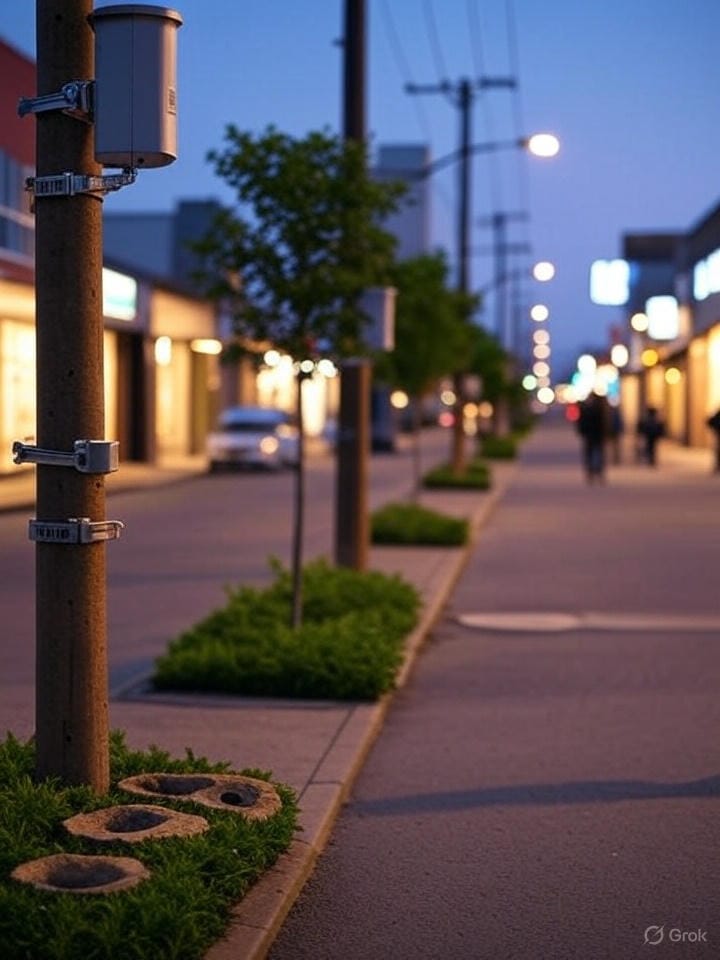
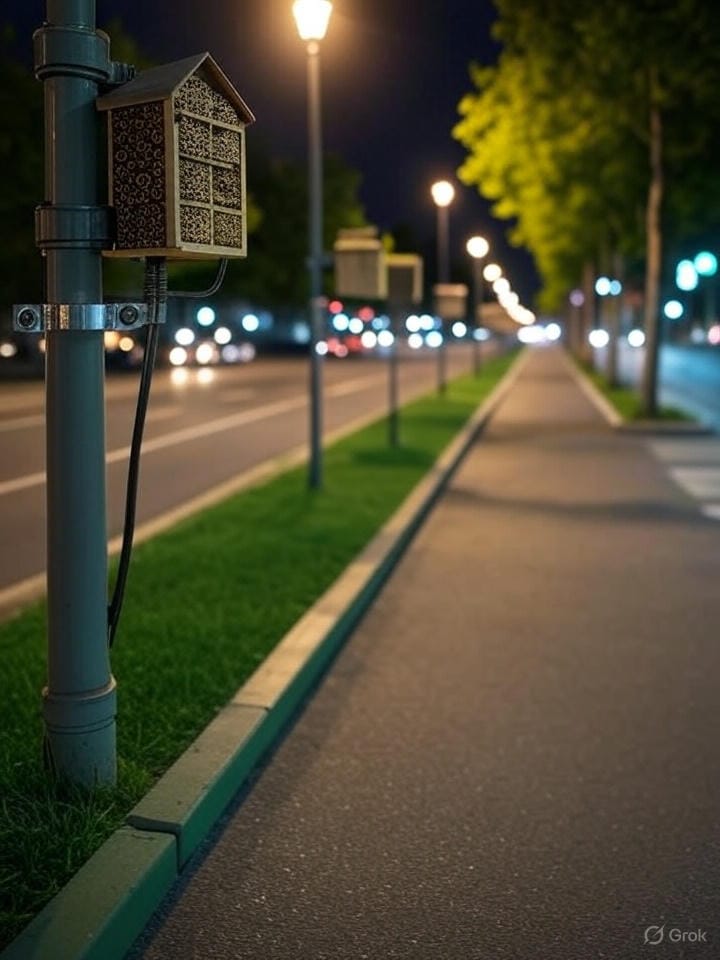
What are the Benefits of bee hotels in cities
Urban bee hotels in public spaces aren’t just decorative, but also actively strengthen the city’s ecosystem and improve how people feel about where they live. Click here if you don’t know how to attract native pollinators
Boost the native pollinators population
These bee hotels give shelter to solitary native bees like mason and leafcutter bees which are often overlooked in traditional conservation. These pollinators will thrive and return each season due to more nesting options. This process will stabilize the pollination cycle in urban parks and gardens.
Increase urban plant diversity
More pollinators means more flowering. That transforms into better fruiting for native plants stronger biodiversity in tree understories and even healthier community gardens. Bee hotels will quietly unlock the full potential of urban greenery.
Turn dead space into a pollinator habitat
A single lamp post bench or fence can become a tiny ecological engine. When you install a bee hotel under these areas then it turns an ignored space into a micro sanctuary that supports ongoing pollination.
Encourage slow attention and public engagement
Unlike birds or butterflies that come and go, bee hotels provide a possibility for repeated observation. People start noticing which hotels are used, how bees behave there, and become emotionally invested in a piece of urban nature. It works like internal motivation, the more people see the more public hotels for pollinators will be in the city.
Strengthen local ecological identity
Cities ,that integrate bee hotels into infrastructure, signal something bigger they value in life. Over time, this builds public pride in Biodiversity and a sense of belonging to something quietly alive.
Make Biodiversity visible in daily routines
Bee hotels that are placed near a sidewalk, playground or office courtyard make nature a part of everyday life. They help to demonstrate pollinators especially for kids and adults who may fear bees. When people regularly pass by and see gentle and non-aggressive bees nesting calmly then they reshape their perceptions and build long-term support for urban ecology projects.
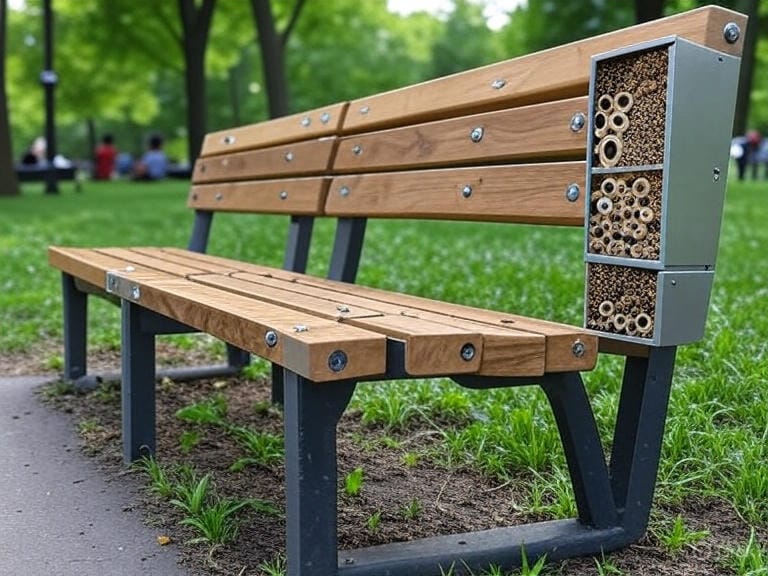
Design ideas for bee hotels : urban infrastructure
1. Modular bee hotels Panels for sound barriers
Instead of blank sound walls along highways or railway tracks you should use modular hexagonal bee hotel tiles that are embedded in vertical wood panels. These create a sculptural effect while providing hundreds of nesting tunnels and also ensure that they’re above the splash zone (at least 2.5 feet).
2. Bee hotels built into solar lighting units
Urban trails and parks are increasingly using solar lamp posts. Integrate bee hotels into the non-lighted rear panel of these poles. Use moisture-resistant wood with sloped roofing above the nest holes. The combined post saves space, energy and supports biodiversity without new installations.
3. Decorative bee hotel bollards
Short concrete or wooden bollards along pedestrian walkways can be topped with detachable nesting blocks. So use UV-treated bamboo or drilled hardwoods. This design keeps bee hotels at eye level for awareness and is easy to swap or maintain without full removal.
4. Bus shelter side panels with nesting features
Install Bee hotels inside the perforated side panels of urban bus shelters. These can be laser-cut metal sheets with hexagonal patterns backed by wood blocks. They add an artistic layer while offering sheltered microhabitats in dense urban cores.
5. Sculptural public Art as a Bee habitat
Commissioned public sculptures that are made up of steel frames and natural nesting materials can serve dual purposes- art and habitat. Let’s take an example, a park sculpture shaped like a honeycomb or a leaf can contain internal bee hotels. Just ensure they’re placed in sunlight open areas which are away from high foot traffic zones.
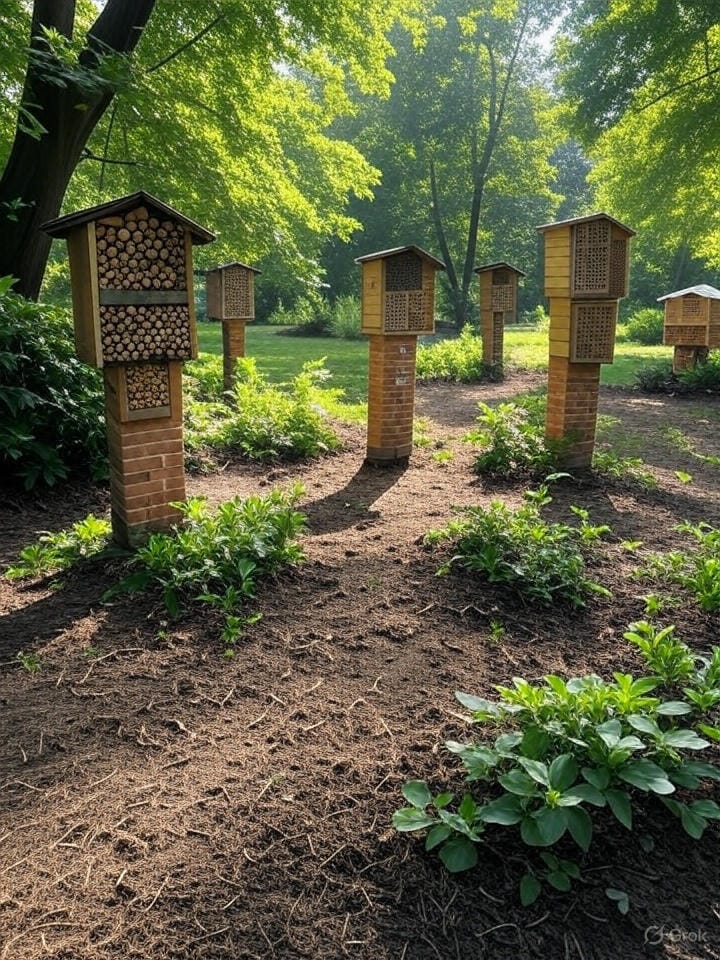
What are the common mistakes to be avoided
Wrong Orientation: Don’t face the hotels the wrong way. Many urban installations ignore the cardinal direction. Bee hotels should face east or southeast so they catch the morning sun and stay dry. North-facing or shaded placement often remains cold and Damp which reduces bee activity and increases mold growth.
Using the wrong materials: using cheap bamboo tubes or plastic structures may look nice for urban bee hotels in public spaces but they trap moisture that encourages mold and mites. So instead use hollow plant stems or untreated hardwood blocks with smooth and correctly sized holes (3-8 mm in diameter). Avoid glass or varnish or any reflective surfaces that overheat the interior.
Mounting directly on the ground, Bee hotels need to be at least 1 meter ( 3-4 feet) off the ground, on a stable and non-vibrating surface like a fixed wall. You don’t have to place them on fences that rattle or trees that sway because it makes them unusable for solitary bees.
Overcrowding or creating bee slums and skipping regular maintenance. Placing too many hotels close together in one area can lead to parasite buildup and disease transfer. So you have to address this issue because solitary bees don’t form hives, they prefer low density and scattered housing. Most important that you have to regularly maintain those hotels. Monitor them seasonally and replace between every 1-2 years.
Native tree underplanting will help in your overall plan to establish urban bee hotels in public spaces. A real-world government initiative that installs bee hotels and “bee bunkers” across public plazas and open streets in New York (NYC DOT Pollinator Port Project)
FAQs
What are native bees that use bee hotels ?
Common native bees that use beehives include mason bees ( Osmia spp.), leafcutter bees (Megachile spp.) and resin bees. These solitary bees prefer dry tube-like cavities for nesting – making urban bee hotels a perfect fit when they are properly designed.
Are urban bee hotels really used by native bees ?
Yes, when they are installed and maintained properly. Solitary native bees like mason bees, leafcutter bees and resin bees will actively nest in urban bee hotels. However correct placement and tube size are essential for success.
Are urban bee hotels in public spaces actually effective ?
Absolutely yes. When urban bee hotels in public spaces are well designed and properly placed then they can provide critical nesting sites for solitary native bees. However dear success depends on the maintenance location and avoiding common design mistakes that we have discussed earlier.
